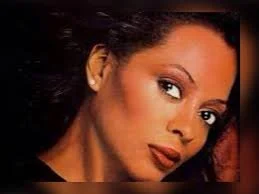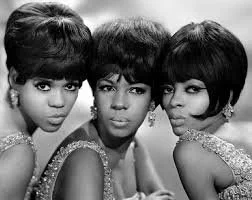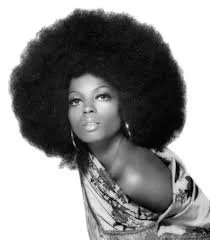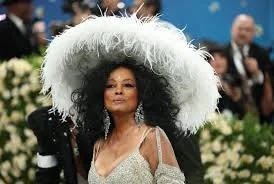Ms Ross is “The Boss”! Why the hate though?
My father owned a library of vinyl records from the 60s, 70s and 80s. My awareness of these music was borne out of inquisitiveness, not his effort to enlighten me. I knew they existed and I acquainted myself with them. This is how I came to know about Diana Ross. I knew her before I knew about Motown and her membership of The Supremes, which happened later.
Diana was a part of my reality in the formative stage because if I was not listening to her albums The Boss ( 1979) and To Love Again (1981), I was watching clips of her show on television, NTA Calabar to be precise, which served as fillers from time to time or music videos like “Muscles” (1982).
In the video she ideates about male anatomy and astral travels. The song which Ms. Ross sings beautifully was written by Michael Jackson, who also provides background vocals. It portrays a confident and self-assured woman with a sense of direction.
Self-confidence has always been Diana Ross’ default state of being. Early stories of her life depict her as being ambitious and focused. Despite a materially-deficient background, the second child of mixed parents had great dreams and huge expectations of life. And she set out to achieve them.
She had once recounted in an interview that her idea of a perfect life was residency in a beautiful home with inner and outer spaciousness containing greenery, horses and a picket fence. And by 1979, on her tenth studio album The Boss, she sings “It’s My House” with palpable comfort and ease, where she informs the listener about the many features within her home. This song sails on the second wave of the feminist movement and speaks to the right of asset acquisition previously denied women.
All the eight songs on the album were written and produced by her friends Nicolas Ashford and Valerie Simpson, who were profound lyricists at Motown. The title track peaked at #19 on the pop singles chart and #12 on the US R&B chart. Furthermore, the longplaying tracks topped the dance charts while the album was certified Gold and peaked at #14 on Billboard 200.
The album counts as one of disco’s finest with three singles “No One Get’s The Price”, “The Boss” and “It’s My House”. It epitomises Diana Ross’ dedication, perseverance and survival in a cut throat industry that treats callously women singers. It reflects an autonomous spirit and free agent who had blindsided onlookers with the uncanny ability to chart the murky waters of fame, create a brand and legacy with unexpected longevity. Unexpected because her name triggers hate and malicious feelings.
The negativity towards Ms. Ross begins from the Motown days and The Supremes. She is recognised as the “Queen of Motown”, in view of her affair with its founder, Berry Gordy who centralized the group around her in order to foster her prominence and visibility above the founder Florence Ballard and Mary Wilson, the third member. According to musiclore, Diana’s affair undermined Ballard’s talent, relegated her to the background and caused her untimely death by cardiac arrest in 1976.
Ballard (left), Wilson (centre)
The grapevine also claims that despite Ross’ privileges at Motown, she was controlled and puppeteered by Gordy, who crafted her image and dictated her every step. There was an unwritten expectation that she would remain his extension and property for life. Consequently, her decision to leave Motown in 1980 was deemed treacherous and foolhardy. The taste for freedom, growth and career expansion marked her as ungrateful to her mentor, ex-lover and “maker”. RCA Records would offer her a $20 million, seven year contract, said to be the most expensive recording deal in history at the time, in 1981. Thereafter, the hatred festered!
Danyel Smith cites nine reasons Diana Ross was perceptibly despised, especially by the black community. First, her solo hits came through the vehicle of disco which was considered pro-black woman.
Second, her hit song “Endless Love” duetted with Lionel Richie was viewed as a collaborative work of race traitors. Richie had also left the Commodores to pursue a solo career, emerging from a subculture which conceptualizes ambition and drive as greed and betrayal of the race.
Third, she self-preserved and was not especially friendly towards other women singers. Diana had come under criticism by fellow women singers like Aretha Franklin who described her singing style as “ stage whispering with sequins”. She would respond that “she (Aretha) could out-sing me, but she never out-classed me”. For Aretha, vocal range, not vocal diversity was viewed as the parameter for singing success. And Diana would come to view such women as cruel and avoided them like a plague.
Fourth, in the heydays of the Black Power movement, she swirled romantically by marriage to a whiteman. In fact, one may add that Diana was an intentional woman who only matrimonized white men, presumably because she received better treatment from them, in comparison to the incessant gender war, abuse and drama which characterized black romantic relationships.
Fifth, her love affair with Gordy was shrouded in secrecy; sixth, the paternity of her eldest child was never revealed. Ms. Ross kept her business and preoccupations private, and rarely spoke publicly; seventh, she lived and thrived unapologetically without a care for public validation and thorny opinions. However, Smith’s third reason is saved as the last due to its saliency.
She writes: “There’s a massive amount of disdain, across race and gender lines, for Black women who not only know their worth but revel in it, ideate from it, and have expectations - of themselves and everyone else - of flawless production”. Shine Bright (56)
The above assertion is the cardinal rationale for the malicious treatment Diana Ross receives. Self-assured, self-aware, self-loving and self-respecting black women are anathemic within a system accustomed to their dehumanization, objectification and position at the bottom of the totem pole. They are expected to be free of aspirations, self-sacrifice and expect no rewards. As such, a woman like Diana Ross becomes a thorn in the flesh of a system that prides itself on the pains and humiliation of black women.
It has been noted that her quest to work with Quincy Jones was snubbed because she was seen as “too difficult to shape” and past her prime. For patriarchy, an intelligent woman with high standards which stem from knowledge of the intricacies of music business is deemed non-malleable and obnoxious; Lionel Richie was threatened by her starpower and declined sharing the same billing. Consequently, future performance of the duet suffered setbacks. However, Luther Vandross would rekindle memory of the iconic song in a duet with Mariah Carey in Songs (1994).
It is hard to be Diana Ross when one is constantly misunderstood and constantly maligned. And this is the lived reality of black women with boundaries. They are labelled uppity and proud, where pride often means intolerance of exploitation and disrespect. A black woman’s self-love is criminalized and such women are gleefully punished in a society that stews in insecurity.
In a moment of self-reflexivity, Ms. Ross once said : “I’m pretty satisfied with who I am, and I think that shows”. Clearly, it does and informs the years of consternation. Regardless, Ms. Ross remains ebullient, cerebral, hale and hearty in her crone years, as an accomplished entertainer, recognised and influential figure, happy mother and grandmother.
Ms. Ross at The Met Gala 2025.
At age 81, she still actively tours and remains an inspiration to a plethora of women artists in subsequent generations like Ledisi, Beyoncé and Madonna. She may not be a gifted vocal acrobat and dramatist like Aretha Franklin or Patti LaBelle, nonetheless, her simple non-operatic singing and clarity is just as valued and esteemed like the aforementioned women. Songs from her solo era have been sampled 682 times and 333 covers of her songs have been made. She may not have multiple Grammys on her shelf like some, but she remains iconic and legendary.
Indeed, she is the Boss! Shine on Ms. Ross!





